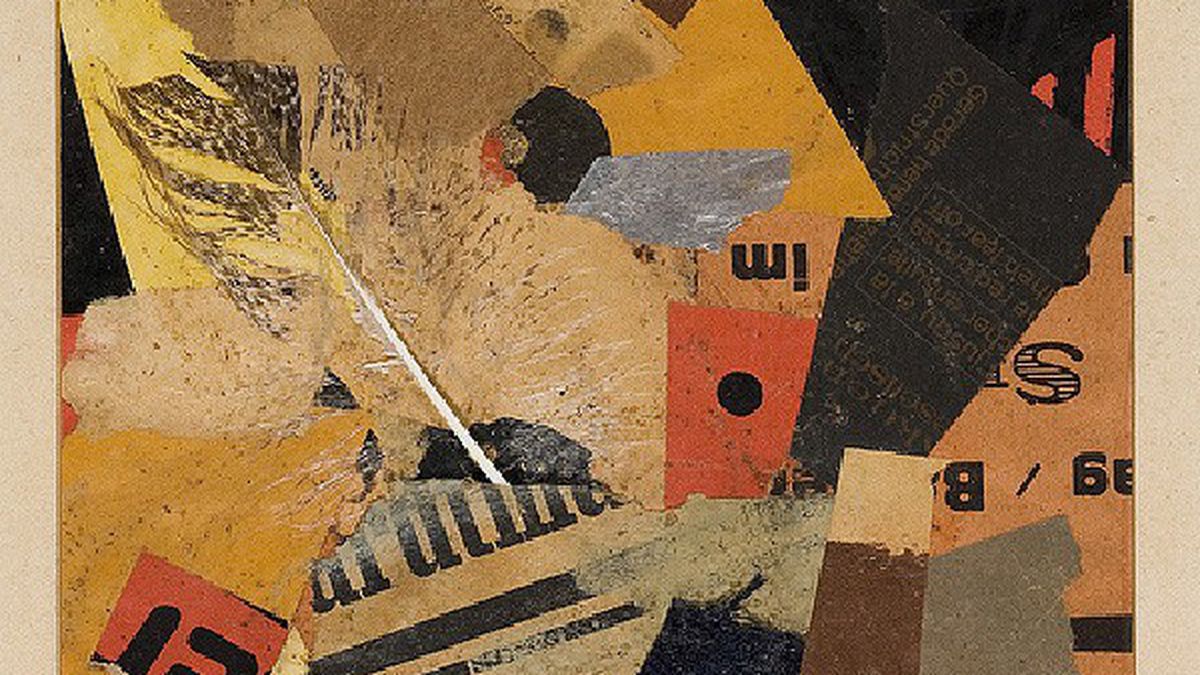When Robert Rauschenberg began creating “combines,” large assemblages of heterogeneous materials, he said, “A pair of socks is no less suitable to make a painting with than wood, nails, turpentine, oil, and fabric,” and “I think a painting is more like the real world if it’s made out of the real world.” He might have been speaking for the German artist Kurt Schwitters, who died, mostly forgotten, in English exile, five years before Marcel Duchamp organized the New York show that smote young Bob. That prolific collagist, painter, sculptor, typographer, poet, publisher, and pioneer installation artist is the subject of Kurt Schwitters: Color and Collage, an exhibition featuring nearly eighty collages, assemblages, and sculptures made between 1918 and 1948. It’s a must-see: Many of the pieces come from private collections, and the show, curated by Isabel Schulz (of the Kurt and Ernst Schwitters Foundation and the Kurt Schwitters Archive, Sprengel Museum, Hannover) and Josef Helfenstein (Menil Collection, Houston), has no other West Coast venues.
Schwitters is considered a Dadaist, but his relationship with that provocative antiwar, anti-art movement must be qualified: If Schwitters employed Cubist fragmentation, typographical liberties, and even provocative performances as they did, and was friends with Arp, Ernst, and others, he differed with the politicized Berlin Dadas in his allegiance to complete freedom, which they saw as bürgerlich, bourgeois, and overly beholden to the past. That’s an odd judgment considering the outrageous, comical theatricality of Schwitters’ sound poetry, especially the stupefyingly tongue-twisting “Ursonate,” or Primordial Sonata (1922-32), many versions of which are gratifyingly now online (including versions recited by computers untroubled by nonsense); sing Zikete bee bee/Rinnzekete bee bee/Rakete bee bee … Rum! Exiled from the movement in 1920, he created his own movement, Merz, taking its name, possibly linking shit and pain bilingually, from a word fragment (Kommerz/commerce) legible in one of his collages, and declaring himself and all his works Merz. “I felt myself freed [after the war] and had to shout my jubilation out to the world,” Schwitters wrote. “Out of parsimony I took whatever I found to do this, because we were now a poor country. One can even shout out through refuse, and this is what I did, nailing and gluing it together.” Weltmerz, means, of course, Merz World, a term used by Leah Dickerson in her catalog essay. Most contemporary artists might consider themselves obligated to declare themselves, too, Merz, like Kirk Douglas’ insufficiently detached followers all claiming to be Spartacus. More next week. Kurt Schwitters: Color and Collage runs through November 27 at Berkeley Art Museum (2626 Bancroft Way, Berkeley). 510-643-6494 or BAMPFA.berkeley.edu












